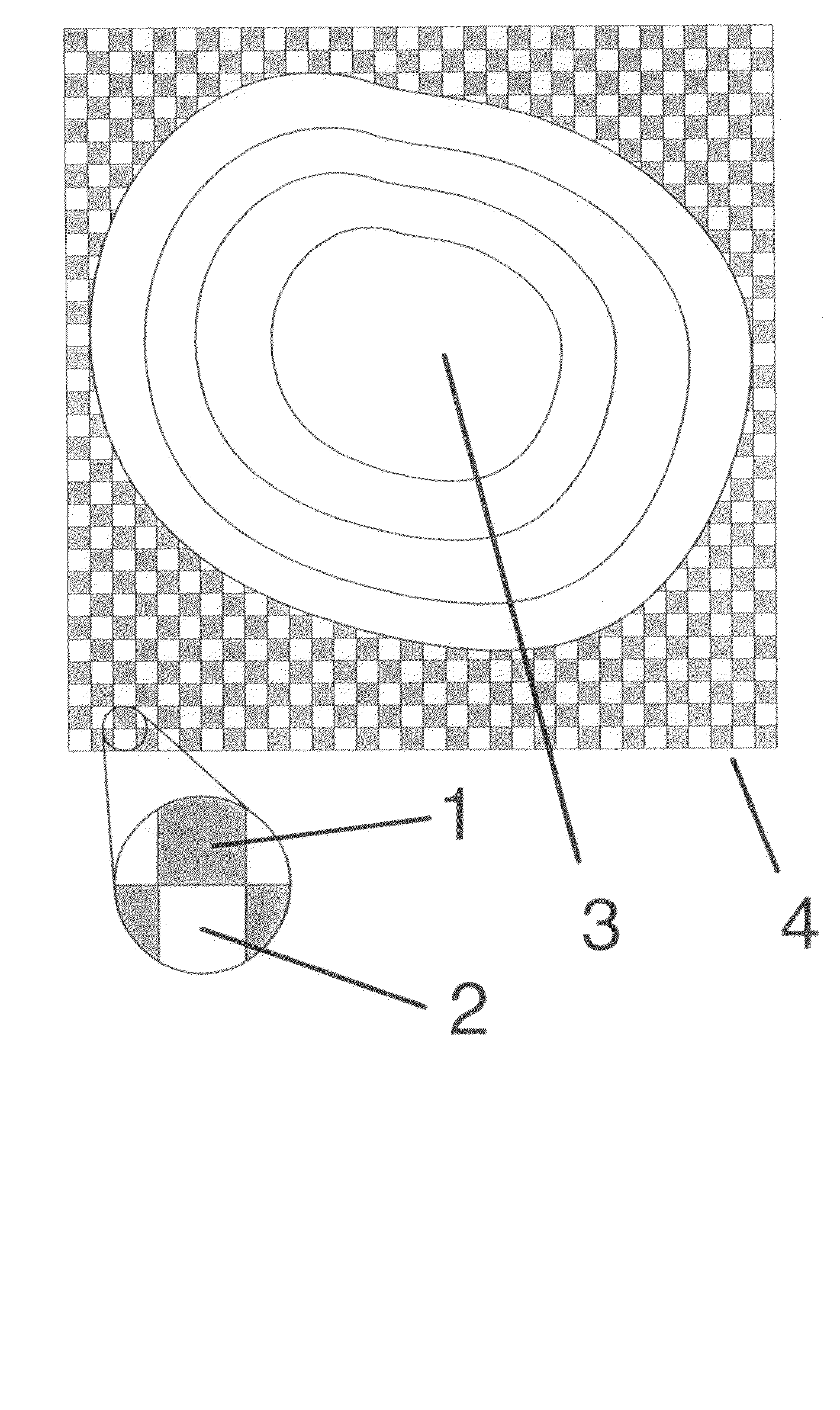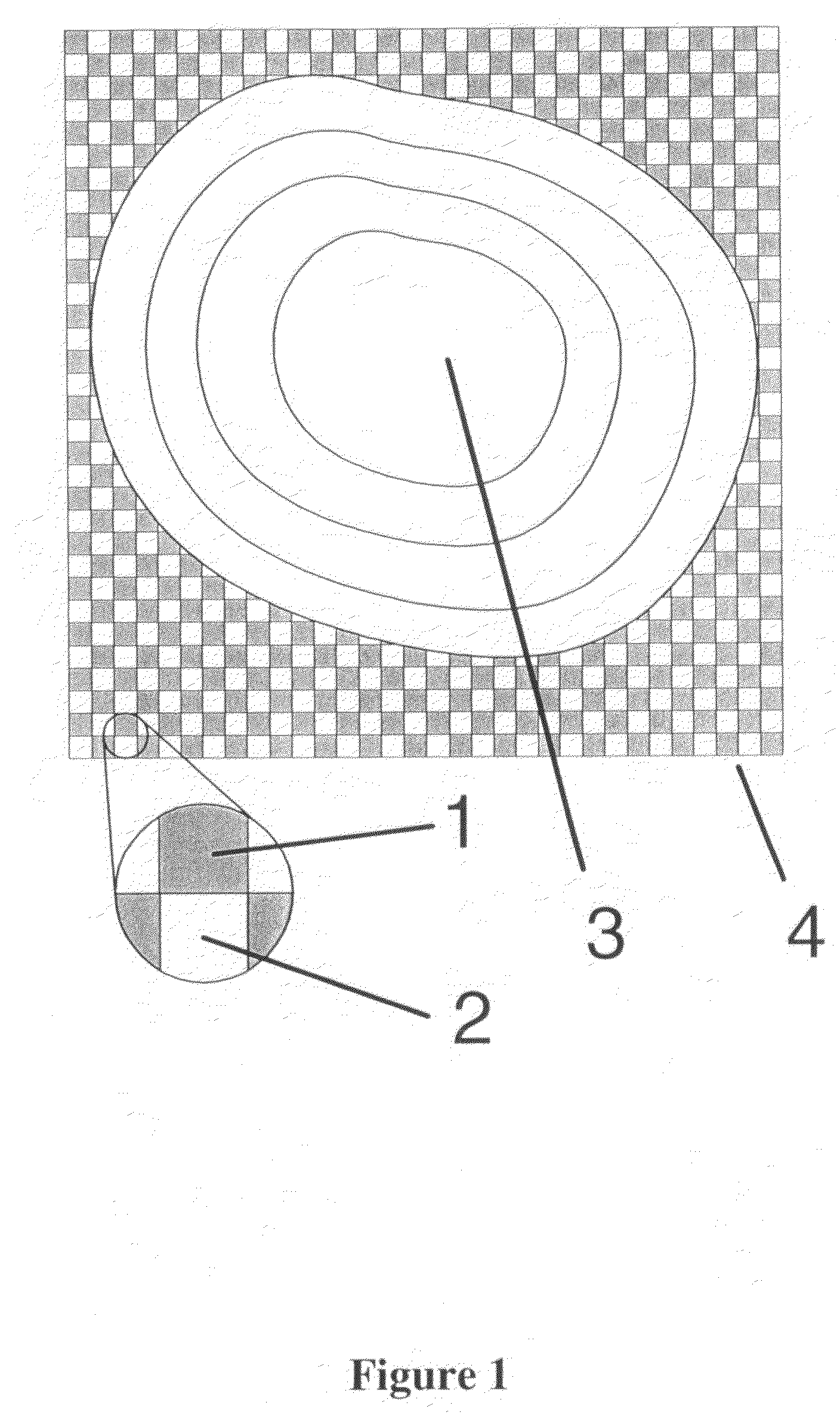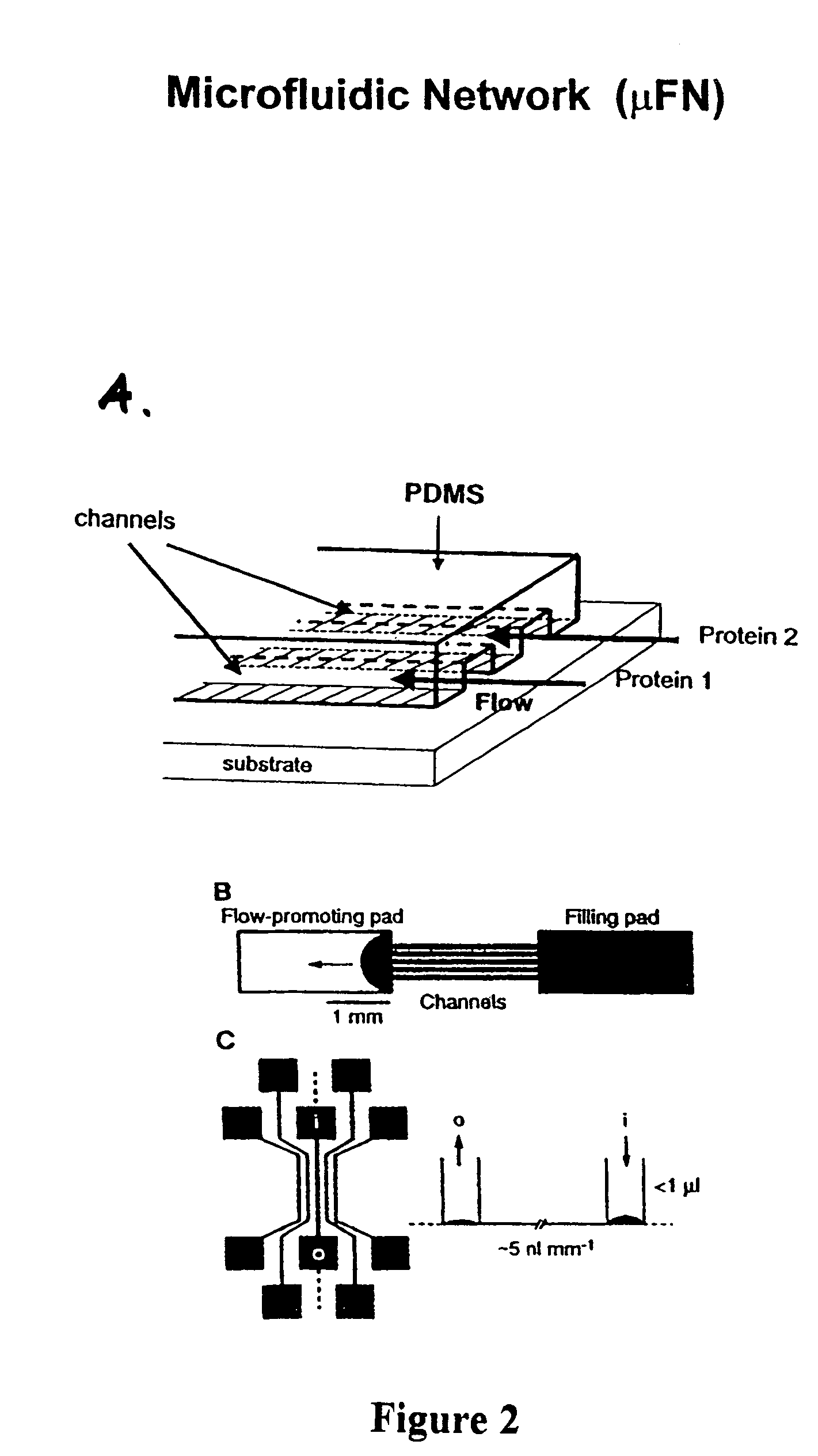Microarrays for analyte detection
a microarray and analyte technology, applied in the field of microarrays for analyte detection, can solve the problems of false readings, problems such as the problem of culture and then counting, and achieve the effect of avoiding false readings
- Summary
- Abstract
- Description
- Claims
- Application Information
AI Technical Summary
Benefits of technology
Problems solved by technology
Method used
Image
Examples
examples
[0067]The present invention is illustrated by the following examples. It is to be understood that the particular examples, materials, amounts, and procedures are to be interpreted broadly in accordance with the scope and spirit of the invention as set forth herein.
example i
Redundant Patterned Protein Microarrays for Bacterial Detection
[0068]Patterned microarrays of antibodies to specific bacteria were used to perform a series of bacterial immunoassays of E. coli 0157:H7 and Renibacterium Salmoninarum (RS). Microarrays were fabricated using microcontact printing (μCP) and characterized using scanning probe microscopy (SPM). The high-resolution SPM imaging showed that bacteria had a higher binding affinity to antibody patterns than unfunctionalized regions of the substrates. Additional studies indicated a low binding affinity when bacteria were exposed to microarrays of non-specific antibodies.
Materials and Methods
[0069]Stamp fabrication. Poly(dimethylsiloxane) (PDMS) stamps were fabricated by casting and curing Sylgard 184 (Dow Corning, Midland, Mich., USA), an elastomeric polymer, against photoresist micropatterned silicone masters. The master relief pattern used to make a PDMS stamp was a negative relief of the stamp mold and was manufactured at the ...
example ii
Redundant Protein Patterning Via Microfluidic Networks
[0091]We used poly(dimethylsiloxane) (PDMS) in a microfluidic deposition network (MFN) procedure to create redundant multiple protein microarrays in a checkerboard pattern onto functionalized glass surface, thereby creating biologically active surfaces for use as immunosensors. The prototype 4-column sensor chip is shown in FIG. 9. The squares are approximately 10 μm by 10 μm, 10 μm apart, and 10 μm deep. The design of our MFN was optimized for use in a scanning probe microscope (SPM), such that multiple squares in the checkerboard pattern were visible within the maximum scan area in the microscope (about 40 μm by 40 μm). SPM and fluorescence microscopy (FM) were used to characterize the microarrays before and after performing multiple immunoassays. Additional efforts were made to minimize the adsorption of PDMS to the surface by blocking the entire PDMS MFN stamp with bovine serum albumin (BSA).
[0092]Protein microarrays fabricat...
PUM
| Property | Measurement | Unit |
|---|---|---|
| volume | aaaaa | aaaaa |
| scan size | aaaaa | aaaaa |
| scan size | aaaaa | aaaaa |
Abstract
Description
Claims
Application Information
 Login to View More
Login to View More - R&D
- Intellectual Property
- Life Sciences
- Materials
- Tech Scout
- Unparalleled Data Quality
- Higher Quality Content
- 60% Fewer Hallucinations
Browse by: Latest US Patents, China's latest patents, Technical Efficacy Thesaurus, Application Domain, Technology Topic, Popular Technical Reports.
© 2025 PatSnap. All rights reserved.Legal|Privacy policy|Modern Slavery Act Transparency Statement|Sitemap|About US| Contact US: help@patsnap.com



